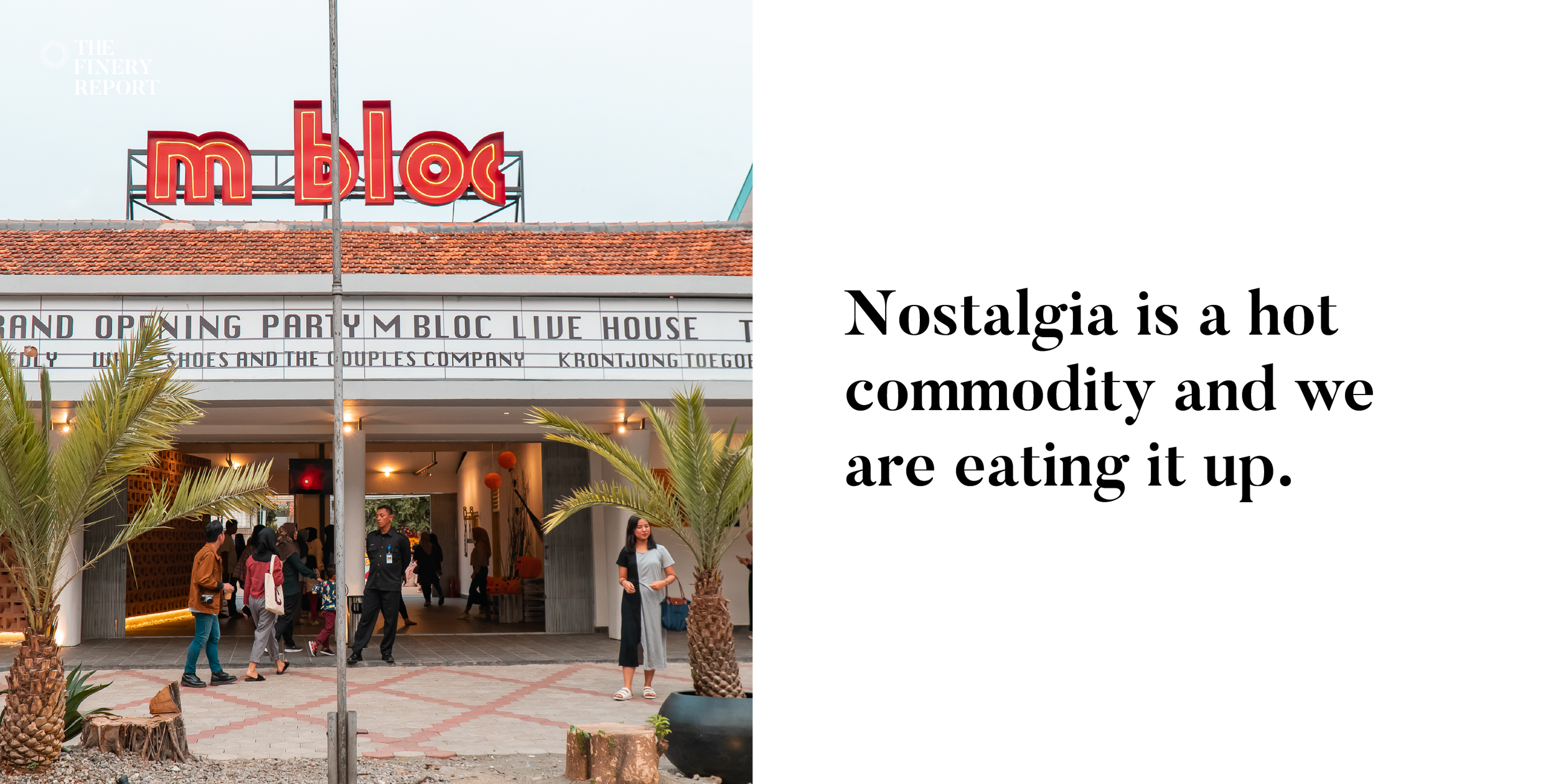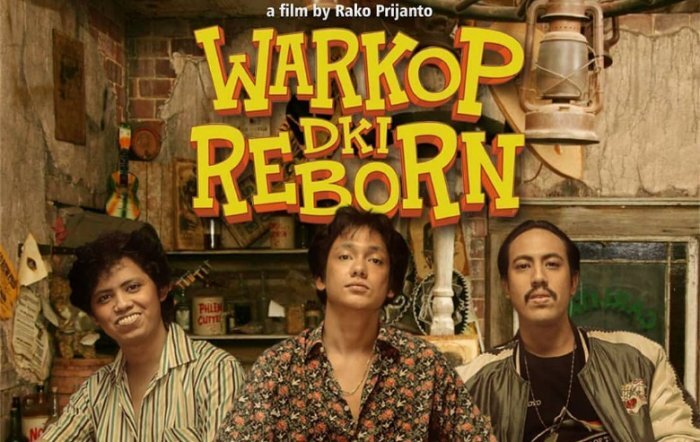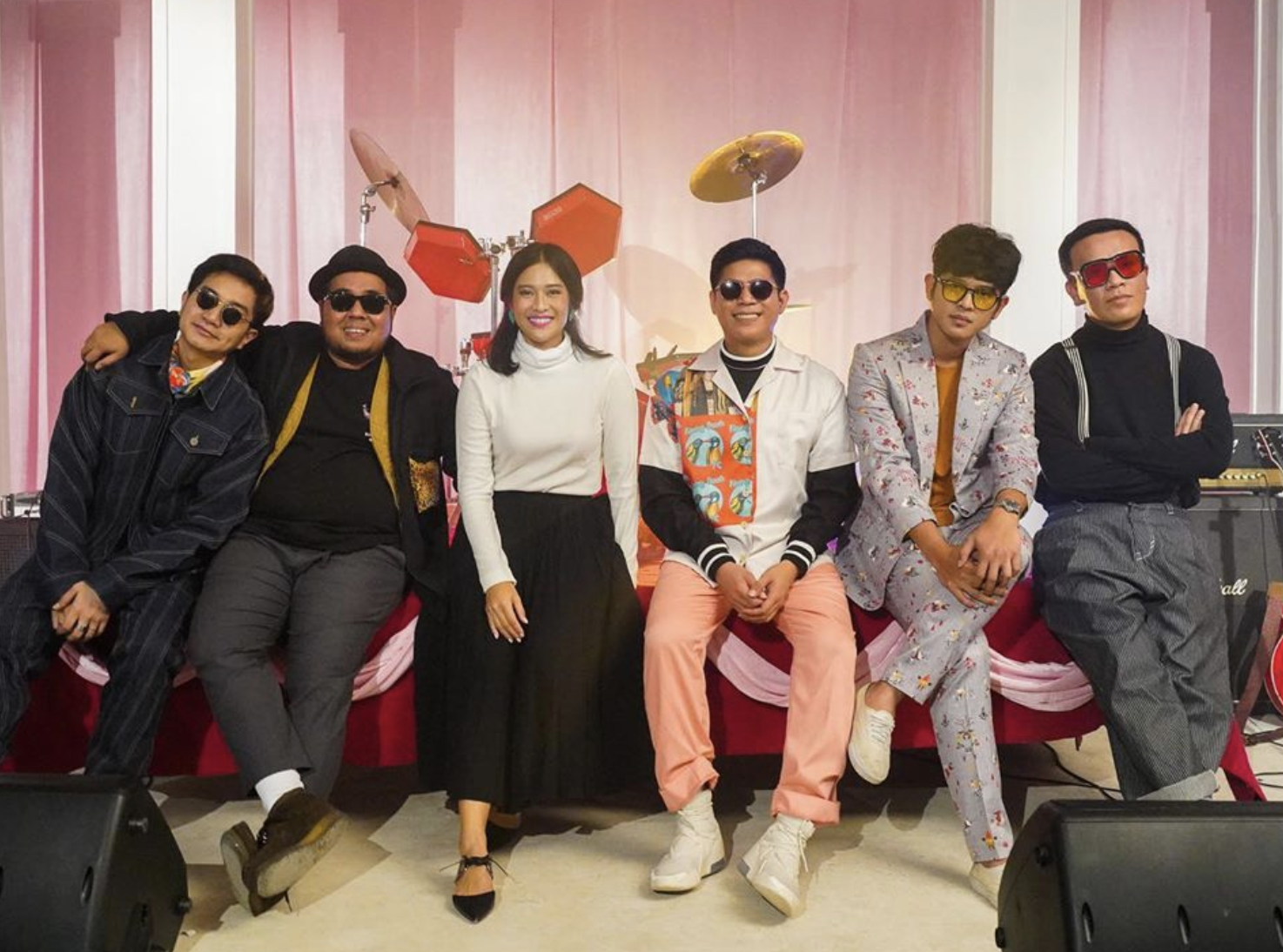When nostalgia becomes a commodity
Image: Shutterstock
“Old is the new New,” Handoko Hendroyono, CEO of PT Ruang Riang Milenial (M Bloc Space), told The Finery Report. “Returning to our roots is the spirit of today’s youths. This trend is everywhere,” he continued. M Bloc Space, which opened in 2019, is only one among a handful of contemporary establishments that offer nostalgic experience for consumers.
The space was once a housing complex owned by Perum Peruri and has been reutilised as a creative hub for youths, with cafés, specialty shops, art spaces and an exhibition hall adding to the hustle and bustle of the place. Through it all, M Bloc Space has kept its original 1950s architecture and embraced its historical past. Its relation to Perum Peruri is proudly displayed inside one of its biggest eateries – Oeang – which translates to ‘money’ in Indonesian. Old rupiah banknotes are the centerpieces of its interior; it is quite a beautiful homage.
Image: M Bloc Space via Shutterstock
M Bloc Space aims to revive the spirit of #semuakembalikeblokm or ‘all coming back to Blok M.’ Blok M was the ‘it’ place for trendy youngsters back in the 1980s. And in a way, M Bloc Space has done exactly that. The place is almost always packed with visitors, especially on weekends or when there are special events.
The reality that today’s generation would be so interested in nostalgic items and culture felt unimaginable at one point. There was a time at the dawn of the new millennium when ‘futuristic’ was the flavor of the day. The Guardian called it “the optimism and techno-utopianism of the early 2000s.”
From fashion to music, art and even architecture; we all aspired to emulate the imagined look and ideals of the ‘future.’ It was all synthetic materials, metallic colors and space-inspired designs everywhere we looked.
Interestingly, now that we are 20 years into the not-so-new millennium, the trends have shifted significantly. Trends these days prefer natural, eco-friendly materials over synthetic ones, while gadgets now opt for simpler, minimalistic look as opposed to outer space-esque aesthetics. And somehow, as far as trends go, we have become increasingly nostalgic.
Nostalgia is a wistful or excessively sentimental yearning for return to or of some past period or irrecoverable condition. It originates from the Greek words for return and suffering – “nostos” and “algos.” Thus, the literal meaning of nostalgia is the suffering caused by the yearning to return to one’s place of origin.
In February 2020, it was announced that “Friends” reunion special was scheduled for a May 2020 release (UPDATE: the special has been delayed due to the COVID-19 pandemic). The series, which aired from 1994 to 2004, is hailed as one of the most popular TV shows of all time. This new development is a testament not only to the popularity of the series, but also the faith of the production studio, sponsors, investors and the network that “Friends” is still a bankable product in 2020. Nostalgia is a hot commodity and we are eating it up.
Image: Warkop DKI Reborn
It is evident in our local pop culture, too. Remakes, adaptations or spin-offs of classic Indonesian movies or TV shows have been made and gotten popular in the last few years (i.e. Pengabdi Setan, Si Doel The Movie). In fact, the highest-grossing Indonesian movie in over two decades is an adaptation: “Warkop DKI Reborn: Jangkrik Boss! Part 1.”
A number of old movies have also been restored and screened in big and small theatres throughout Indonesia, including Kineforum and Kinosaurus. Harry Hariawan, Assistant Programme Coordinator of Kineforum stated that while screening for newer movies are generally more popular, there is a segment of customers that is fond of classic movies, especially cult favourite “Tiga Dara.”
So why are we so fond of nostalgia? One of the reasons may lie in our discontent with our current predicament, as there is a causal link between negative mood and nostalgia. We are not content with the way things are, therefore we long for and look at a ‘better’ time.
Merdi Simanjuntak from disco group Diskoria Selekta commented that that may be a factor for the resurgence of retro music in the local music scene. “Young musicians of today may be getting bored with the bigger trends at the moment, such as EDM, and they start looking for other options. It turns out that our (disco) theme and music style are appealing enough for them to become the new trend. We could not have predicted this before,” he said.
Image: Diskoria Selekta and Dian Sastrowardoyo
Diskoria Selekta recently released a new song featuring Dian Sastrowardoyo titled “Serenata Jiwa Lara.” Within two weeks on YouTube, the MV has amassed almost 1.2 million views. The MV emulates the style and look of the 1970s disco, from the sound and the dance to the grainy qualities. Merdi admitted that – beyond her sizable talent as an artist – his group and Laleilmanino, the songwriter, were initially interested in Dian Sastrowardoyo because she was a ‘90s icon.
Secondly, nostalgia makes us feel good. It increases positive self-regard and generates positive affect. Being reminded of a treasured time in our lives can generate positive affect. And what medium can better encapsulate the feel of a time than a movie? “Films are the most complete media to discover the conditions of the past. How they dressed, talked, thought, or acted – these can all be seen in films. And most visibly, a city’s landscape in the past such as 1950s Jakarta in “Tiga Dara” movie,” Harry Hariawan told The Finery Report.
Last but not least, nostalgia bolsters social bonds. Take, for example, the popular “Generasi 90an” brand. The brand capitalises on the 1990s nostalgia and unites people through shared ‘90s-centric experience. The brand started from a book, then a community, and as of today, a whole business of its own that has movie, event and merchandising projects under its belt.
Nevertheless, it is argued that for a retro item to regain popularity by way of nostalgia, a degree of relatability to consumers may be required. Alexander Matius, Film Programmer at Kinosaurus, said that local retro movies fare better than international retro movies in the cinema. It may be because for some of us, these movies encapsulated a treasured time in our lives, cities, or language.
Whatever the reason may be, it sure looks like the trend is here to stay. Kineforum, for example, plans to keep listing one or two classic titles in their programme each month. Handoko Hendroyono believes that nostalgia in the sense that we appreciate who we are, where we have been and our locality will remain a trend for a long time. The factors that lead us to feel nostalgic will remain and evolve with us. Thus, nostalgia, too, will always be there. After all, what are we but the reflection of our history?





